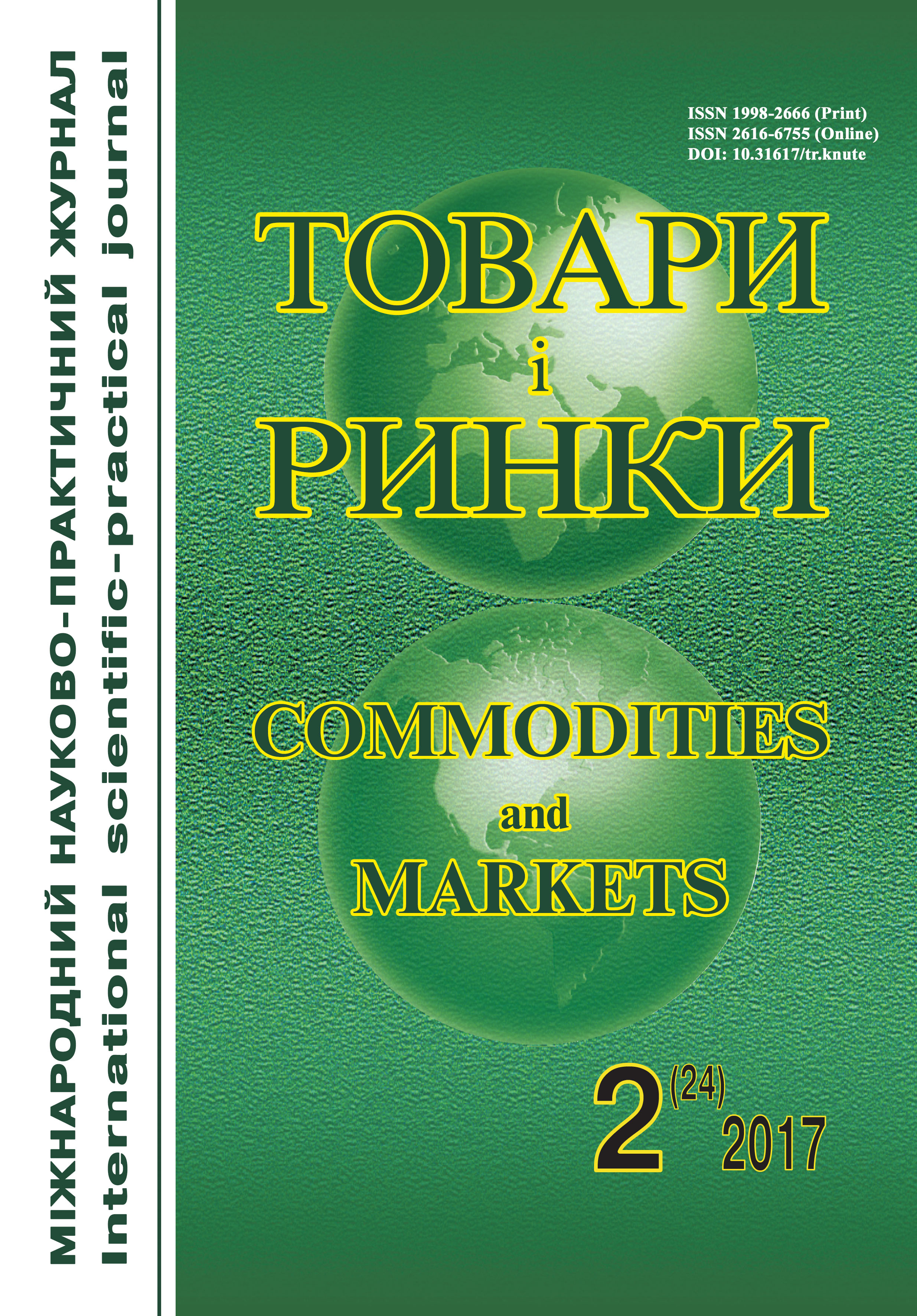Reference models of management of the trade enterprises’ supply chains
Keywords:
reference models, supply chain management, SCOR-model, GSCF-model, CPFR-model, processes flowAbstract
Background. Modern enterprise needs to have an efficient controlling system of logistics results. The solution of this problem can be achieved if the enterprises implements the reference (standardized) models for the estimation of results of logistics, which are actively used in the field of management of the supply chains.
The analysis of recent studies and publications has showed [1–6] that the basic principle of constructing such models is the possibility of their implementation at any enterprise, regardless of scale and type of activity due to the standardization of a process management model and a system for evaluating the execution of operations and business processes. At the same time, the developed models don’t take into account the peculiarities of the functioning of trade enterprises.
The aim of the paper is to study the existing basic reference models of business process management in supply chains and substantiate approaches to their adaptation for use by trading enterprises.
Material and methods. Methods of generalization, structural analysis and comparison, systematization and system analysis are used in this article.
Results. The main reference models of SCOR, GSCF and CPFR supply chain management were considered. The directions and mechanism of their adaptation for use by the enterprises of trade are determined. The scheme of the model of the trade enterprise interaction with suppliers and consumers in the supply chain was developed, the CPFR model was improved, the three-level approach to the definition of the tasks of the supply chain participants was proposed, the tasks of the manufacturers, the wholesale and retail enterprises were specified, as a result of which they are focused on the end user. The importance of developing and applying reference models is due to the need for modeling and standardization of business processes in the supply chain to facilitate and improve the integration of logistics systems and logistics processes of the trade enterprises with suppliers and consumers, as well as logistics intermediaries in the supply chain.
Conclusion. According to the results of the research of the main business processes of the trade enterprises, the material flow chain is a multilayer flow, or a synthesis flow, characterized by a diverse structure and the distribution of its constituent flows in space and time. Multilayer and specific features of the synthesis flow greatly complicate the task of optimizing the interaction of its constituent flows, so there is a need to solve problems of optimization of flow processes in the supply chain, which the trade enterprise is a participant of. The main management reference models of business processes were adapted for use by trade enterprises by improving the model of interaction between the trade enterprises and suppliers and consumers in the supply chain and improving the CPFR model, consisting of a three-level approach to defining the tasks of the participants and the supply chain being oriented to the end consumers.
References
Krykavs'kyj Je. V., Pohyl'chenko O. A., Falovych V. A. Lancjug postavok – ex adverso tradycijnogo pidpryjemstva. Nauk. zapysky L'viv. un-tu biznesu ta prava. 2014. № 12. S. 297—311.
Chuhraj N. I., Girna O. B. Formuvannja lancjuga postavok: pytannja teorii' ta praktyky : monografija. L'viv : Intelekt-Zahid, 2007. 232 s.
Shapyro Dzh. Modelyrovanye cepy postavok : per. s angl. ; pod red. V. S. Lukynskogo. SPb. : Pyter, 2006. 720 s.
Upravlenye cepjamy postavok. Spravochnyk yzd-va Gower ; pod. red. Dzh. Gattornyy. M. : YNFRA-M, 2008. 670 s.
Sergeev V. Y., Gryshutkyna D. Prymenenye koncepcyy upravlenyja postavshhykom zapasamy potrebytelja (VMI) v logystycheskoj systeme raspredelenyja zapasnyyh chastej. Logystyka y upravlenye cepjamy postavok. 2007. № 3. S. 10—28.
Yvanov D. A. Upravlenye cepjamy postavok. SPb. : Yzd-vo SPbGPU, 2009. 660 s.
Stok Dzh. R., Lambert D. M. Strategycheskoe upravlenye logystykoj : per. s angl. M. : YNFRA-M, 2005. 797 s.
Levyna T. V. SCOR-modelyrovanye. Logystyka y upravlenye cepjamy postavok. 2012. № 2 (49). URL : http://lscm.ru/index.php/ru/po-rubrikam/item/801-scor-%D0%BC%D0%BE%D0%B4%D0%B5%D0%BB%D0%B8%D1%80%D0%BE%D.
Kalda K. O. Logistychnyj pidhid do formuvannja lancjugiv stvorennja cinnosti ta vartosti aviatransportnoi' produkcii'. Visn. Hmel'nyc. nac. un-tu. 2009. № 1. S. 206—211.
Merzljakov A. V. Эvoljucyja logystycheskyh podhodov k klyentooryen-tyrovannosty. European Social Science Jornal. N 10—2. C. 426—436.
Douglas M. Lambert. Supply Chain Management: Processes, Partnerships, Performance. Third ed. Sarasota : Supply Chain Management Institute, 2008. 431 p.
Seifert D. Collaborated Planning, Forecasting and Replenishment: How to Create a Supply Chain Advantage. URL : https://books.google.com.ua/books?id=sgvzTo-2-1cC&printsec=frontcover&hl=ru&source=gbs_ge_summary_ r&cad=0#v=o.



